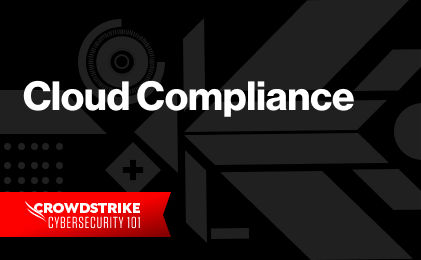Introduction to cloud detection
For most organizations, the cloud has become a central part of their technical strategy, replacing on-premises servers and company-owned data centers with a collection of hyperscalers operating massive public clouds. This growing reliance on cloud technology presents more opportunities for attackers who want to access these critical systems, increasing the need for robust threat detection and security measures.
Cloud detection, the first component of detection and response, is a critical component of maintaining security in the cloud. Cloud detection protects organizations from the rising threat of costly and harmful data breaches.
This article will explore the role that cloud detection plays in identifying and addressing threats to help secure your cloud workloads.
What is cloud detection?
Cloud detection identifies threats, vulnerabilities, and malicious activities within an organization’s cloud infrastructure. Because your cloud services ecosystem is broad, so is the scope of cloud detection — it includes any cloud applications, cloud-stored data, and other associated infrastructure that runs within the cloud.
Although any individual component within the scope of cloud infrastructure is a point of vulnerability for attack, we’ll focus on detecting attacks on cloud workloads and the applications and services operating on them.

Navigating the Clouds: A Comprehensive Guide to Cloud Detection and Response
Download this guide to learn how to proactively manage defenses against sophisticated threats in today’s dynamic cloud environment.
Download NowCore components of cloud detection
Cloud detection comprises three primary components for protecting workloads.
1. Real-time monitoring
Real-time monitoring continually surveys workloads for anomalous activity, such as an increase in traffic or system usage, through a set of dashboards that display current activity across the entire cloud infrastructure. This monitoring can culminate in algorithmic or AI-powered alerts that show anomalies.
2. Behavioral analysis
Using the data collected through real-time monitoring, cloud detection tools use AI/machine learning (ML)-powered behavioral analysis to identify potential threat patterns autonomously. When the workload behavior deviates from the norm, cloud detection tools alert security teams or on-call engineers for remediation.
3. Log and event analysis
As transactions occur and systems read or write data, cloud workloads generate events and logs. These data streams form a record that security teams can use to identify or further analyze a previous event for damage control.
Technologies enabling cloud detection
Cloud detection is an umbrella term for a broad set of cloud security options. Each of these tools works with cloud detection through different mechanisms.
Cloud workload protection platforms (CWPPs)
A CWPP offers continuous threat monitoring for the workloads running across cloud environments. A CWPP integrates into a DevOps system to prevent breaches by identifying anomalous activities within your workloads. CWPPs can help with vulnerabilities across the board, preventing intrusions and scanning for vulnerabilities within containers.
Integrating with security information and event management (SIEM)
Another option is to integrate cloud detection with a next-generation SIEM system. These systems combine event tracking with log management to capture threats in real time. Having a centralized location to track security incidents makes it easier to mitigate threats as they happen.
Advanced threat intelligence
Advanced threat intelligence taps into threat intelligence feeds to ensure systems are up to date on new threats and tactics that hackers have at their disposal. Zero-day attacks are previously unknown exploits that are especially dangerous, as antivirus software and patches don’t yet exist to defend against them. Even publicizing the existence of a zero-day can increase the occurrence of that attack within minutes, making advanced threat intelligence essential to hunting down zero-day threats.
Challenges in cloud detection
Common challenges with enabling cloud detection within an organization include:
- Scale: Cloud environments grow elastically based on the needs of the business, requiring dynamic monitoring of multi-regional environments.
- Visibility: As businesses move beyond a single cloud (or if they operate in a hybrid setting), maintaining visibility of every component in a rapidly changing environment becomes increasingly difficult.
- Alert fatigue: Detection is a balancing act between minimizing false positives and being able to immediately identify and capture real threats.
Best practices for effective cloud detection
To effectively detect threats in cloud workloads, there are best practices to follow. Attackers are constantly improving their methods and tools, and organizations that adopt the following best practices are better poised to counter them.
- Continuous monitoring: Continuous monitoring is one of the most important components for an effective cloud detection system. Attackers and their tools don’t take time off, so automated detection systems operating 24/7 are required to keep threats under control. Continuous monitoring requires setting up tooling that gathers detailed telemetry from all parts of the stack — from network requests to CPU and memory usage.
- Regular threat assessment: Periodic threat assessments can help evaluate and strengthen systems as your cloud workloads change and as threat actors gain new capabilities. This means scheduling regular audits and carrying out other helpful exercises, such as red teaming and disaster recovery. There are many tools that can help facilitate these threat assessments.
- Collaboration between teams: Team-level collaboration is a core part of effective cloud detection. It removes silos between teams, allowing security, cloud engineering, and IT teams to form a cohesive defense that yields comprehensive threat detection. This is best accomplished with a toolset that all teams can collaborate with and easily implement into their workflows.
Learn More
Read this blog post to learn about 3 crucial capabilities an effective cloud detection and response solution should have.
Protect your cloud workloads with CrowdStrike Falcon Cloud Security
Cloud detection is critical to maintaining security within the cloud. As your workloads operate in heterogeneous environments and with dynamic scaling, identifying threats requires a comprehensive, always-on approach to keep cloud workloads protected.
CrowdStrike Falcon® Cloud Security offers a battle-tested solution to detecting and responding to threats. It can be deployed to continuously monitor and help ensure compliance across your cloud, proactively defending workloads within different environments. Falcon Cloud Security works at scale and gives you a single pane of glass in your cloud detection strategy.







